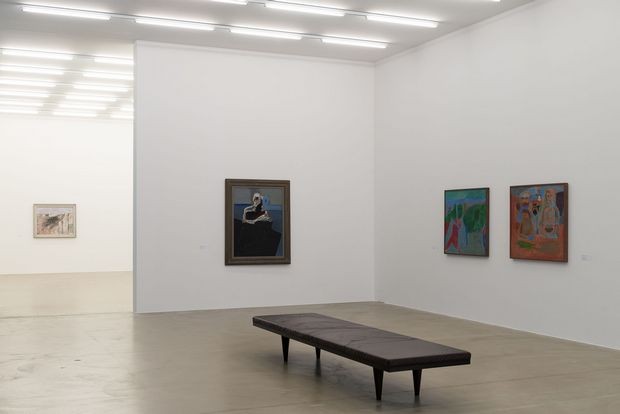Karl Ballmer
Head and Heart
28 Aug - 13 Nov 2016

Karl Ballmer, Head and Heart, installation view at Aargauer Kunsthaus, Aarau, 2016. Photo: Timo Ullmann, Aarau
For the first time in 26 years, the Aargauer Kunsthaus is devoting a solo exhibition to the painter and writer Karl Ballmer (1891 – 1958). In cooperation with the Ernst Barlach Haus, the artist’s oeuvre will be brought back to mind – and introduced to a new-generation audience – first in his place of birth, Aarau, and subsequently in his main place of activity, Hamburg.
Karl Ballmer spent the time between 1922 and 1938, which was the most formative period for his work, in Hamburg. As a member of the Hamburg Secession he was among the city’s leading avant-garde artists. In his sensitive portraits as well as in complex landscape and figure paintings he pursued a type of painting in which the essence hidden behind outward appearances is expressed. Among his central themes is his critical, primarily philosophical reflection on anthroposophy. Successful with his art, he was defamed as a “degenerate artist” by the Nazis in 1937 and consequently forced to return to Switzerland. In Ticino, his final place of exile and creative production, he developed his late work as an author and painter.
The exhibition Karl Ballmer. Head and Heart looks at the artist’s various creative periods in light of art historical analyses and most recent research findings. More than one hundred paintings and works on paper from the museum’s collection enter into a dialogue with forty top-notch loans from private collections as well as German and Swiss museums. Original documents from the Aargau State Archive, which holds the writings in Ballmer’s estate, offer insights into the artistic and art-political milieu in which Karl Ballmer was active before and after the war.
Karl Ballmer spent the time between 1922 and 1938, which was the most formative period for his work, in Hamburg. As a member of the Hamburg Secession he was among the city’s leading avant-garde artists. In his sensitive portraits as well as in complex landscape and figure paintings he pursued a type of painting in which the essence hidden behind outward appearances is expressed. Among his central themes is his critical, primarily philosophical reflection on anthroposophy. Successful with his art, he was defamed as a “degenerate artist” by the Nazis in 1937 and consequently forced to return to Switzerland. In Ticino, his final place of exile and creative production, he developed his late work as an author and painter.
The exhibition Karl Ballmer. Head and Heart looks at the artist’s various creative periods in light of art historical analyses and most recent research findings. More than one hundred paintings and works on paper from the museum’s collection enter into a dialogue with forty top-notch loans from private collections as well as German and Swiss museums. Original documents from the Aargau State Archive, which holds the writings in Ballmer’s estate, offer insights into the artistic and art-political milieu in which Karl Ballmer was active before and after the war.
